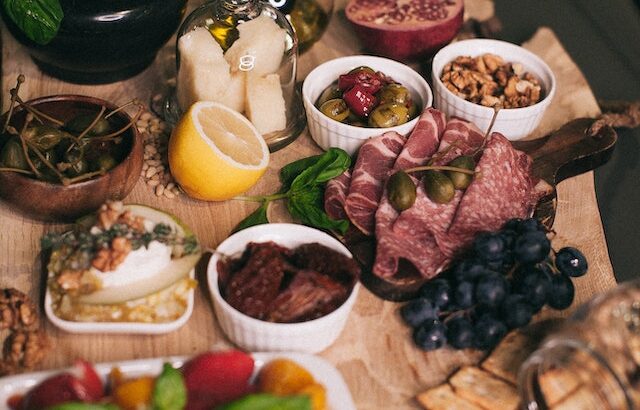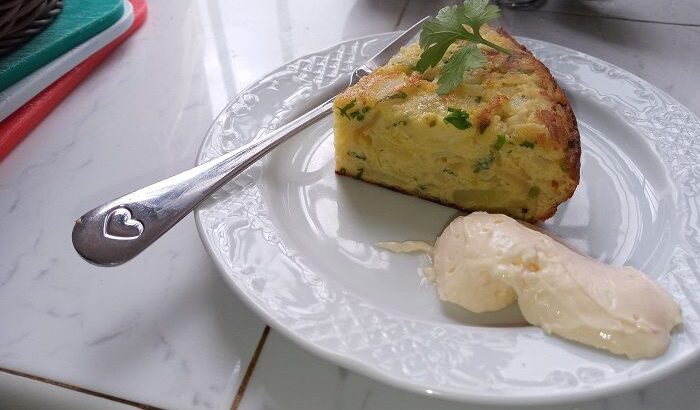I Made Fish Chips and Mushy Peas Six Nights out of Seven Missing Mushy Peas! These days, we can get most of the items associated with UK cuisine. OK!, so we might have to travel to the coast to get them, or, to an English Shop about 40 minutes drive away. So, recently I have […]
Category: Spanish Food and Drink
SPANISH FOOD A DN DRINK IN NERJA
Nerja has a great variety of bars and restaurants as well as fast food joints. You can enjoy classic Spanish food as well as Chinese, Indian, Italian, French and many more cuisines.
World of Asparagus: Health Benefits and Spanish Recipes
Exploring the Delicious World of Asparagus Welcome to our culinary journey where we explore the delightful world of asparagus! This versatile vegetable, cherished for its delicate flavour and nutritional prowess, holds a special place in both traditional and contemporary Spanish cuisine. Join us as we unravel the health benefits of asparagus and discover some delectable […]
Feliz Navidad: A Flavourful Fiesta of Spanish Christmas Traditions
Feliz Navidad: A Happy Spanish Christmas Spanish Christmas As the festive season unfolds, Spain transforms into a magical wonderland of vibrant traditions, mouth-watering delicacies, and lively celebrations. Spanish Christmas, or “Navidad,” is a unique blend of religious customs and local folklore that captivates both locals and visitors alike. Let’s take a delightful journey through the […]
Turkey breast wrapped in bacon and cooked in an air fryer
Recipe for turkey breast wrapped in bacon and on a bed of lentils **Ingredients:** – 1 boneless turkey breast (approximately 2 pounds) – 6-8 slices of bacon – 1 tablespoon olive oil – 1 teaspoon garlic powder – 1 teaspoon onion powder – 1 teaspoon dried thyme – 1 teaspoon dried rosemary – 1/2 teaspoon […]
La Tomatina: Spain’s Juiciest Fiesta of Fun and Tomatoes
Change Mud for Tomatoes and you have a Spanish Glastonbury – Wednesday 30th August 2023 When it comes to unique and exhilarating festivals, Spain knows how to throw a party like no other. One such event that stands out from the crowd is “La Tomatina,” a vibrant and messy celebration that has captured the hearts […]
Top Ten Spanish Tapas – What are your favourites?
Tapas: A Truly Unique Spanish Tradition Spanish tapas are a delightful assortment of small, flavorful dishes that are meant to be shared and enjoyed. Here’s a list of the top 10 Spanish tapas that are popular and loved by many: 1. **Patatas Bravas**: Fried potato cubes served with a spicy tomato sauce and often […]
Chicken Wrapped in Bacon With Chickpeas – Pollo Envuelto En Tocino Con Garbanzos
Pollo Envuelto En Tocino Con Garbanzos This dish is a tad similar to UK Hunters Chicken, insomuch as it is chicken wrapped in bacon. However, trust me, this dish is as Spanish as you can get. The Garbanzos or Chickpeas are a bit of a staple here in Spain. They are cheap, they go with […]
Easy Pickled Red Onions – Tasty Easy Condiments
Here’s a simple recipe for Pickled Red Onions In Andalucia, at the time of writing, the weather is in the high 30’s, and some days, even hotter! There is a simple, tasty and refreshing condiment that goes with all sorts of dishes and is even great on its own: Pickled Red Onions. It is so […]
Nerja Restaurants and Chiringuitos – Good or Bad?
Nerja Communities on Facebook – Opinions are Divided My two favourite Nerja restaurants I wrote a blog a week or so ago referencing two Restaurants in Nerja that we first ate in on our original visit to Nerja in March 1995. Two weeks in the Balcòn de Europa Hotel flew by. We had seen the […]
Cooking Crispy Belly Pork in a Taotronics Air Fryer
The very best Crispy Belly Pork in the world! Crispy Belly Pork Recipe I love cooking. I will try my hand at any type of cuisine; Chinese, Indian, Greek, French, Spanish, you name it, I’ll cook it! One of my wife’s favourite meals is crispy belly pork. The crispier, the better. There are many different […]
Without doubt the very best restaurant in Nerja
Which is (or was) the very best restaurant in Nerja? I was out walking this morning (as you do) and in the quiet of the Malaga countryside, a thought occurred to me; don’t ask why, but, I wondered which, was, the best restaurant that I ever used in Nerja. To give you some idea of […]
Ossobuco or Rabo de Toro; Which is the best?
Two dishes from two different countries I have a long-standing love affair with cooking. I would rather spend hours in the kitchen than making eggs and chips. Beans on toast? It would be a cold day in hell before I would make something so simple. There are two dishes that I have made on a […]
Spanish Food and Drink – How to Make Paella
My favourite Spanish food – Paella What is Paella? Paella refers to a traditional Spanish dish typically cooked in a wide, shallow pan called a “paellera” or “paella pan.” The pan is an essential part of the cooking process and helps to achieve the characteristic flavours and textures of paella. It is designed to […]

Discover the Delicious Benefits of Spanish Food: Fresh, Flavorful, and Heart-Healthy
From Fresh Ingredients to Healthy Fats: How Spanish Cuisine Boosts Your Health and Your Taste Buds Spanish food is loved by people all over the world, and for good reason. With a wide variety of dishes that boast fresh, flavorful ingredients, it’s no wonder that Spanish cuisine is so popular. In this blog post, we’ll […]

International Potato Omelette Day March 9th
Yes! It really is Potato Omelette Day Potatoe Omelette Day, this is a Joke; right? From the Sur in English website, I find out that March 9th is dedicated to the humble potato. As it happens, I am a huge fan of tortilla or potato cake, potato omelette or whatever you prefer to call it. […]


